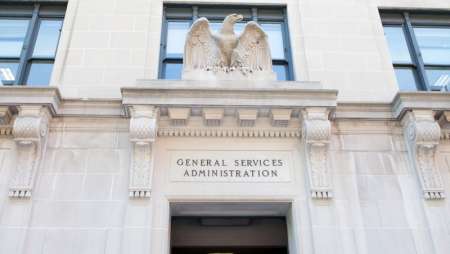Yogi Berra told us it’s like déjà vu all over again–and cyber stalkers let out a huge yawn at yesterday’s House Armed Services Committee hearing on cyber operations. This torturous exercise in reviewing technology security and public safety challenges associated with critical infrastructure was studded with the clichés and platitudes that set our nation up for a massive kinetic cyber attack. […]
Security is the great white whale of Federal IT–even as we make progress, it is just out of reach. Late last month, Zscaler announced it had prioritized rigorous security standards by achieving the Service Organization Control (SOC) 2, Type II Certification. […]
Cybersecurity is at the heart of IT modernization. While modern technologies provide agility and convenience, a core requirement of new solutions is the ability to respond to new threats. […]
Last week, the National Institute of Standards and Technology (NIST) revealed the initial public draft of its Special Publication 800-160 Volume 2, Systems Security Engineering: Cyber Resiliency Considerations for the Engineering of Trustworthy Secure Systems. […]
The U.S. military has long laid claim to having the best-equipped, best-trained fighting force in the world, and to spending more on defense than the next eight top-spending nations combined. But when the battleground is cyberspace, does that claim hold up? […]
It is imperative for Federal agencies to effectively utilize threat intelligence combined with the power and agility of the cloud to better defend their networks. But, today, agencies are lacking adequate situational awareness to give their IT and security teams more clarity about what is going on in their networked environments. So, what’s holding them back? […]
The Department of Homeland Security’s (DHS) rare public alert last week about a large-scale Russian cyber campaign targeting U.S. infrastructure raised a piercing alarm about vulnerabilities in the nation’s power grid, and underscored what officials have meant when talking about the need for a whole-of-government and whole-of-nation approach to cyber defense. Protecting against a major attack, managing the damage once one hits, and responding to an attack are beyond the reach of any one agency or sector, they argue; the job requires concerted efforts from the public and private sectors. […]
While Federal agencies race to migrate to the cloud, security concerns seem to multiply by the hour. This month alone, Russian hackers penetrated the U.S. power grid; cyber attackers got into the network of a petrochemical company in Saudi Arabia in hopes of triggering an explosion; and North Korean hackers apparently “blitzed” Turkish banks and government organizations to gather intel for a future heist. […]
Opening day for the Nationals might be a week away, but four Beltway insiders have already knocked one out of the park. The latest omnibus spending bill, which passed through the Senate early Friday morning, includes $100 million for the MGT Act’s centralized revolving capital fund. President Trump signed the MGT Act into law late last year as an amendment to the National Defense Authorization Act. […]
The tactics of warfare aren’t what they used to be. In addition to asymmetric battlefield tactics that differ from conventional battles, they also can include cyber, social, economic, and psychological strategies that don’t necessarily involve physical combat or destruction–or even direct human involvement–and can’t be divined by tracking troop movements or fleet deployments. As a result, the signs of impending war aren’t what they used to be either. […]
Agencies are rolling out aspects of the Continuous Diagnostics and Mitigation (CDM) Program with varying degrees of speed and success, but the inherent benefits of the program are not being questioned. […]
On Tuesday, President Trump released his management agenda, which focused heavily on his IT modernization goals. Top of mind for the administration? Improving the customer experience, helping agencies better deliver on their missions, and reducing costs to the taxpayer. […]
Federal IT comes with some baggage–much of its data is trapped in legacy technologies. Agencies can’t realistically pick everything up and move to more modern infrastructure. So how do they bridge the gap? MeriTalk’s latest report found that improving data sharing between new and legacy systems is the number one solution to accelerating Federal IT modernization. The “Modernizing the Monolith” study explores why legacy systems are so persistent and outlines a path to modernizing with them, instead of in spite of them. […]
A recent study showing just how easy it is to hack into Internet of Things (IoT) devices–and to use that access to gain entrance to a larger network–focused on commercial products used in the home. However, it could serve as yet another wake-up call for the Department of Defense and other government agencies that are increasingly relying on IoT. […]
The Department of Homeland Security (DHS) has been working in unison with the Office of Management and Budget to assess the risk management posture of the Federal government. They’ve been using a combination of agency self-reporting and independent verification to evaluate each agency’s mitigation techniques as well as the nation’s overall security standing. DHS’ latest […]
Government IT leaders may feel a little punch drunk lately. Between new mandates, an understaffed workforce, and aging systems–they are getting hit from all angles. Indeed, Chad Sheridan, CIO for USDA’s Risk Management Agency kicked off his keynote at last Thursday’s Veritas Public Sector Vision Day in Washington, D.C. by quoting Mike Tyson: “Everybody has a plan until they get punched in the mouth.” […]
Do agencies have enough time to make a smooth transition to the new Enterprise Infrastructure Solutions (EIS) contract by spring of 2020 when the older telecom contract vehicles expire? […]
Artificial intelligence (AI) deployments in the Federal government are already making government smarter, based on examples shared during the second of a three-part series on AI launched last month by the House Subcommittee on Information Technology. Federal agency leaders from the Defense Advanced Research Projects Agency (DARPA), the General Services Administration (GSA), National Science Foundation (NSF), and Department of Homeland Security (DHS) discussed how AI is being implemented to improve the mission of their agencies and what is required to ensure the technology continues to be viewed as a problem solver. […]
The Department of Defense (DoD) and contractor Cerner are coming off an eight week break in the initial deployment of what’s planned to be a worldwide health care records system. The team stopped work to address glitches in system performance and contend with negative user feedback. But officials in charge of the deployment of the MHS Genesis system said the pause was planned as part of the rollout, initial complaints were expected, and DoD still expects to complete the $4.3 billion system by 2022. […]
Not all bots are bad. But in the wrong hands, botnets can be commanded to do some very nefarious things, like Distributed Denial of Service–DDoS–attacks to disrupt and bring down websites. There are also malware-based bots that are increasingly being used to steal data and personal information. […]
Last month the Congressional Subcommittee on Information Technology began a three-part series of hearings to break through the myths and the hype to gain a real understanding of Artificial Intelligence (AI) and the role it can play in the Federal government. […]
The Defense Information Systems Agency (DISA) has completed the transition of the Secret Internet Protocol Router Network (SIPRNet) to a virtual network, which increases its bandwidth tenfold, while supporting plans to extend SIPRNet to the very edges of the network via the commercial cloud. […]
New technologies and techniques are changing the cybercrime landscape in a significant way, creating new challenges for those entrusted with protecting networks and data. […]
In times of emergency, state governors have regularly called in the National Guard, for reasons such as assisting the recovery after natural disasters like Hurricane Katrina in 2005 or to suppress protests in Ferguson, Mo., in 2014. If voting systems are under siege, should they do the same? […]
Critical infrastructure protection is so vital to the United States’ national and economic security, as well as public health and safety, that disruption or destruction of any of the 16 critical sectors would have a debilitating effect on the nation. […]
Acronyms abound with a seemingly endless stream of Federal IT regulations and guidelines related to cloud and cyber security. Trying to make sense of the madness? On March 8, at “Cyber Convergence: Security, the Cloud and Your Data,” Federal visionaries will crack the code on some of the most critical developments in government’s IT agenda – from cloud-based application security to MGT, FITARA, and more. […]
The proliferation of digital platforms within the government–including mobile devices, cloud computing and the Internet of Things–has increased the sprawl of the computing landscape and with it new vulnerabilities for potential cyber attacks. […]
Reports surfaced five years ago that the Kremlin had started buying typewriters to avoid computer leaks. Suffice to say, it’s a complicated cyber world out there today–from nation states to cyber criminals to organized crime to 400lbs guys in their bedrooms in New Jersey. And, in this dynamic environment, the only thing we know for sure is that the way we’ve done things before won’t protect us anymore. Trustwave Government Solutions is debuting its new Threat Hunting service for forward-leaning government agencies that are tired of having their cyber clocks cleaned. […]
Pentagon and allied leaders agree that future conflicts will likely take the shape of a “hyperwar” –a fast-paced clash guided via cyberspace and accelerated by artificial intelligence, but with real, even possibly nuclear, consequences. NATO’s most recent risk report, the GLOBSEC NATO Adaptation Initiative, states that the next world war could come as a hyperwar, and says North Korea, China, and Russia are working on the capability. Speakers on a panel at this month’s AFCEA West 2018 conference in San Diego agreed, emphasizing that the United States needs to keep up with technological developments being adopted by other countries, particularly with regard to artificial intelligence (AI). […]
With the passion of an evangelical, Deputy Defense Secretary Patrick Shanahan preached the Defense Department’s (DoD) “uncompromising” approach to cybersecurity last month at the AFCEA West conference in San Diego. And, his sermon included spreading the responsibility for cybersecurity to industry as a condition of winning contracts. […]



























